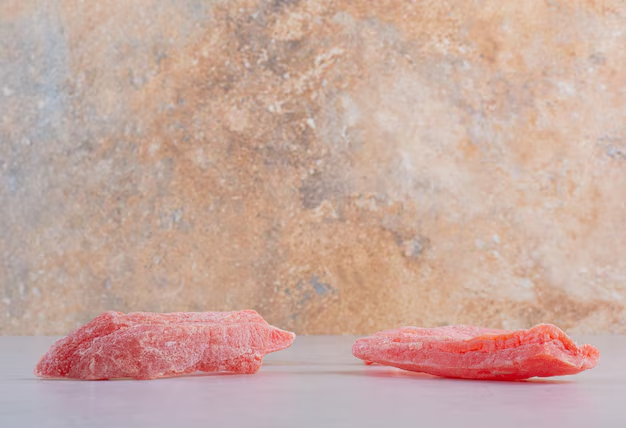Safe and Sound: Ultimate Guide to Storing Raw Meat in Your Refrigerator
Storing raw meat properly in a refrigerator is more than just an organizational task—it's a vital practice for ensuring family safety and preventing foodborne illnesses. Safeguarding your food, kitchen, and family begins with understanding how to store raw meat effectively. Here, we’ll explore the best practices, common mistakes to avoid, and related insights to elevate your kitchen management skills.
Why Proper Storage of Raw Meat Matters
When it comes to raw meat, improper storage can lead to bacterial growth, food spoilage, and unpleasant odors—not to mention the risk of serious health issues. Ensuring safe storage helps maintain the quality and freshness of meat, preserves its nutritional value, and minimizes waste. Let’s delve into the core principles of securing raw meat in your refrigerator.
Bacterial Growth Prevention
Bacteria like Salmonella and E. coli thrive in the wrong conditions. To hinder these pathogens, it’s crucial to store raw meat at the recommended temperatures and conditions.
Maintaining Meat Quality
Proper storage ensures that your meat remains flavorful and retains its texture. Over time, incorrectly stored meat can become tough and less palatable.
Cost-Effective Practices
Waste not want not! Efficient storage methods mean you throw away less spoiled food, saving you money in the long run.
Optimal Refrigerator Storage Practices
Transform your fridge into a reliable protector of your food by following these proven storage practices.
Ideal Temperature Settings
Keep your refrigerator at or below 40°F (4°C) to stunt bacterial growth. Modern refrigerators often come equipped with digital thermostats, which make monitoring temperatures effortless.
Designated Storage Sections
Store raw meat on the bottom shelf of the refrigerator in a dedicated area to prevent juices from dripping onto other foods. This arrangement keeps foods that are ready-to-eat safe from potential contamination.
Airtight Containers and Wrapping
Invest in airtight containers or quality plastic wrap. This prevents odors from spreading and keeps the meat's natural juices from escaping, which is essential for maintaining both moisture and flavor.
Original Packaging
Keeping meat in its original packaging is generally safe for short-term storage. However, if you're opening it, ensure you rewrap it securely.
Timing Matters
Consume fresh poultry and ground meats within one to two days. Other meats like beef, pork, or lamb have a slightly longer shelf life of three to five days when properly stored.
Missteps to Avoid
Even with the best intentions, mistakes can occur. Here, we break down common storage errors with practical solutions.
Overcrowding Your Refrigerator
Too many items in your fridge can impede proper air circulation. This not only affects the efficiency of cooling but helps create uneven temperatures—conditions unfriendly to raw meat storage.
Storing Meat Above Other Foods
Always avoid placing raw meat above ready-to-eat foods. Gravity ensures juices will drip downward, raising contamination risks.
Neglecting Expiry Dates
Neglecting to check expiry dates can lead to consuming unsafe foods. Make it a regular practice to review and manage product dates.
Exploring Meat Types and Tailored Storage
Understanding the nuances of various meats adds a layer of sophistication to your storage strategy.
Poultry (Chicken and Turkey)
- Shelf life: 1-2 days.
- Key advice: Due to its delicate nature, ensure poultry is in an airtight container to prevent cross-contamination.
Red Meats (Beef, Pork, Lamb)
- Shelf life: 3-5 days.
- Key advice: Steaks and roasts may expand their fridge life when wrapped in freezer-safe packaging, especially if freezing is considered.
Ground Meats
- Shelf life: 1-2 days.
- Key advice: Due to increased surface area, ground meats spoil faster. Prioritize cooking sooner than later.
Seafood
- Shelf life: 1-2 days.
- Key advice: For fish, ensure belly ice or frozen packs remain in contact, as it deteriorates quickly.
Shelf Life at a Glance 📝
Here's a handy bullet-point guide for quick reference:
- 🚫 Avoid placing raw meat above other items.
- ❄️ Refrigerate promptly and keep temperatures at or below 40°F (4°C).
- 📆 Use fresh meats within 1-2 days and other meats within 3-5 days.
- 🍗 Airtight containers enhance freshness and prevent cross-contamination.
- 🥩 Separate storage areas for different types of meat.
Diving Deeper Into Storage Equipment
Let’s take a closer look at practical tools that elevate your storage game.
Refrigerator Thermometers
If your fridge lacks a built-in thermometer, purchasing a standalone one ensures accurate, real-time temperature readings, thus safeguarding against spoilage.
Airtight Containers
Opt for BPA-free and stackable containers. Not only do they aid in organization, but they also maximize refrigerator space, facilitating better air circulation.
Vacuum Sealers
For those who frequently freeze meats, vacuum sealers extend shelf life considerably. By removing air, they prevent freezer burn—a primary cause of texture degradation in stored meat.
Keeping Your Refrigerator Clean
Maintaining a clean fridge is key to ensuring optimal meat storage conditions. Establish a routine schedule for cleaning; remove expired items and wipe spills promptly.
Effective Cleaning Practices
- Use a gentle, food-safe cleanser.
- Disinfect shelves where raw meat is stored regularly.
- Consider using refrigerator liners for quicker cleanups.
A Fresh Take on Safe Meat Storage
Storing raw meat safely in your refrigerator is part science, part art. Through mindful practices, informed storage decisions, and understanding the specific needs of different meat types, you create a safe and efficient kitchen environment. By paying close attention to temperature, proper containment, and strategic placement, you not only minimize food waste but also help preserve the health and safety of those you cook for. Keep these insights in mind to transform your routine food storage into a seamless and effective habit.
